1 of 17
Download to read offline



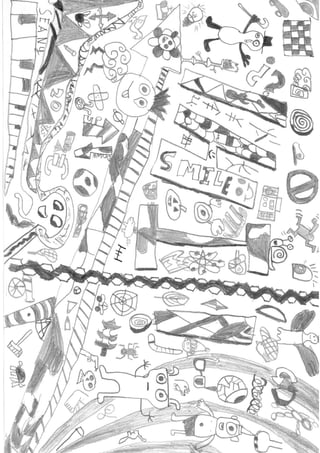
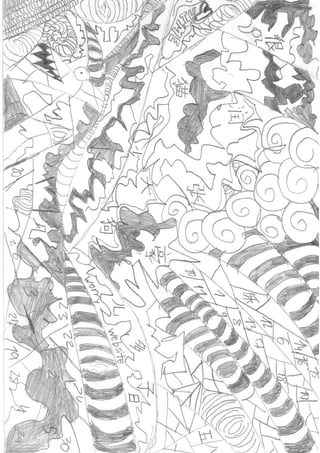
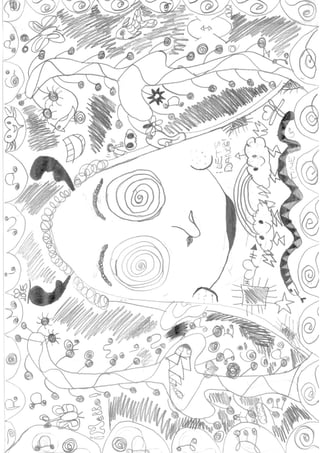
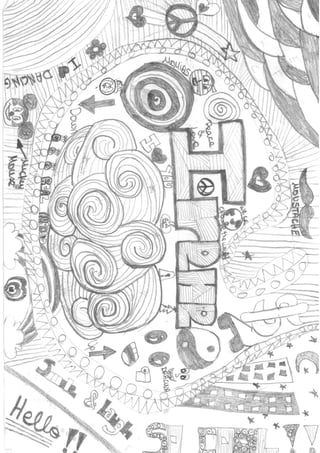

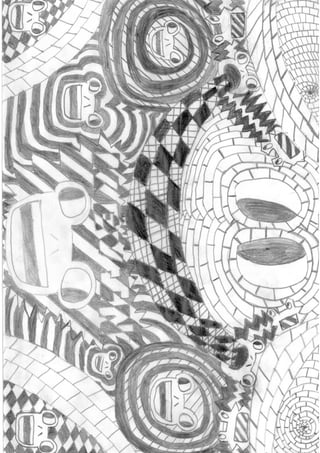
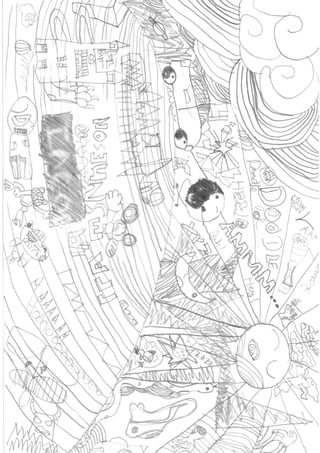

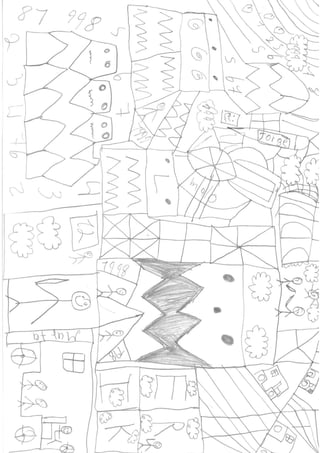

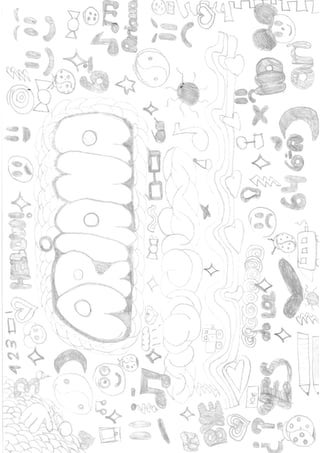
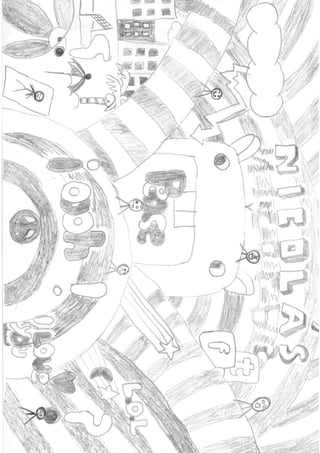
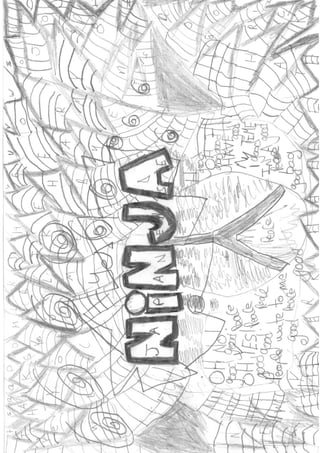
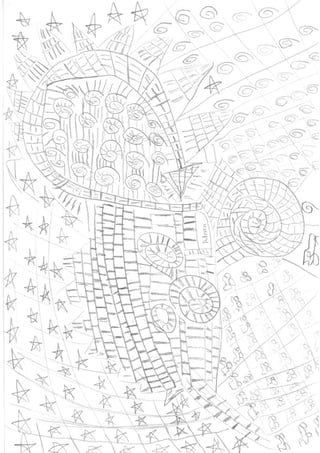
Ad
Recommended
Pet speaking questions with answers
Pet speaking questions with answersloe11
╠²
The document provides sample questions and answers for a PET speaking exam related to topics like home and family, hobbies, personal experiences, and interests. Some key details include:
- The student lives in Madrid in a flat near school with their parents, sister, niece, and nephew. They enjoy spending time with friends and playing sports like football.
- Their favorite city is Rome due to the abundant history, and they enjoy traveling to places around Europe on holidays.
- While they don't currently have a job, they like studying various subjects and staying active with hobbies like sports.
- Nature, animals, and visiting new places also interest the student. They look forward to upcoming trips toPet speaking exam
Pet speaking examIsabelitamellamo
╠²
The PET speaking test lasts 10 to 12 minutes and involves two candidates assessed by two examiners, focusing on personal information, simulated situations, and photo descriptions. Candidates engage in structured conversations and receive guidance on how to express opinions, ask questions, and provide descriptions. Throughout the test, candidates must actively listen and ensure equal participation in discussions, without receiving immediate feedback on their performance.Pet speaking paper
Pet speaking paperJavier Martos
╠²
This document outlines the structure and scoring rubric for a PET speaking exam. It consists of 4 parts: 1) personal questions, 2) a communication activity with decision making, 3) discussion of photographs, and 4) further discussion of the topics from part 3. The exam evaluates candidates on their ability to discuss personal topics, make suggestions, agree/disagree, compare/contrast photos, and express opinions in a natural conversation. Useful language for each part is provided to help candidates perform well.Pet and fce speaking paper part 1
Pet and fce speaking paper part 1Javier Martos
╠²
The document outlines the structure and sample questions for Part 1 of the PET and FCE Speaking exams. It involves a 3 minute conversation with the examiner about personal topics like home, family, work/study, leisure activities, and future plans. The examiner will ask follow up questions to learn more about the test taker's experiences and perspectives in these areas of their life.PET Speaking Guide
PET Speaking Guidemsmary7th
╠²
The document provides guidance for the PET (Preliminary English Test) speaking exam, which consists of 4 parts:
Part 1 involves short introductory questions with the examiner, followed by a longer answer to a question about hobbies or interests.
Part 2 is a simulated situation where candidates discuss options based on a prompt from the examiner.
Part 3 involves each candidate describing a photograph individually within 1 minute.
Part 4 has candidates converse together on a topic related to the photographs, such as family activities versus time with friends. Strategies are provided for effective participation and keeping the discussion engaging.El caso de Papa Noelloe11
╠²
Este documento presenta una serie de preguntas y actividades sobre un libro llamado "El caso de Papa Noel". No proporciona informaci├│n sobre la trama o detalles del libro.Comprehension questions geronimo stilton
Comprehension questions geronimo stiltonloe11
╠²
This document contains comprehension questions about the book "Geronimo Stilton - The Karate Mouse". It asks questions about each chapter to check the reader's understanding of the plot, characters, and themes. Some of the key points covered include Geronimo initially not wanting to try karate but being convinced by Bruce, his training under Sensei Yamamouse, getting nervous before his first tournament, winning the World Championship, and making plans to visit Okinawa where karate began.Pet speaking questions with answers
Pet speaking questions with answersloe11
╠²
The document provides sample questions and answers for a PET speaking exam related to topics like home and family, hobbies, personal experiences, and interests. Some key details include:
- The student lives in Madrid in a flat near school with their parents, sister, niece, and nephew. They enjoy spending time with friends and playing sports like football.
- Their favorite city is Rome due to the abundant history, and they enjoy traveling to places around Europe on holidays.
- While they don't currently have a job, they study on weekends and enjoy subjects like English and math.
- In their free time they like watching movies, spending time with friends, and traveling. Their favorite hobby is football.Half an apple
Half an appleloe11
╠²
Tom and Jim quarrel over an apple that Tom shared with Jim. Tom gave Jim half of the apple, but Jim believed Tom's half was bigger. They argued until an old woman intervened. She examined the halves but could not determine which was bigger. To make the halves equal, she took bites from each half until both boys' portions were completely eaten. The boys learned not to quarrel.Half an apple
Half an appleloe11
╠²
Tom and Jim get into an argument over sharing an apple that Tom brought. Tom gives Jim half of the apple, but Jim claims that Tom's half is bigger. They argue back and forth, with neither boy willing to trade halves. An old woman comes and tries to settle the dispute by examining their halves. No matter which half she thinks is bigger, the boys continue arguing. To stop the fighting, the old woman ends up eating both halves of the apple entirely. She tells the boys that quarreling will never get them anything good.Pet test tips
Pet test tipsloe11
╠²
The document provides a list of grammar and language points for students to remember for exams. It covers topics such as synonyms, the passive voice, verb forms after prepositions, time expressions, pronouns, conditionals, comparisons, the present perfect tense, reflexive pronouns, and language for agreeing/disagreeing. The document is intended to serve as a study guide for students by highlighting important rules and concepts.Trabajo el regalo de cumplea├▒os m├Īs grande del mundoloe11
╠²
El documento presenta una serie de preguntas y tareas sobre un libro llamado "El regalo de cumplea├▒os m├Īs grande del mundo". Se pide resumir el personaje de Rosana, responder preguntas sobre la trama, investigar sobre el h├®roe Aquiles en quien se inspir├│ el nombre del abuelo del libro, dibujar un personaje favorito, y averiguar tres r├®cords de la naturaleza.Trabajo quieres ser el novio de mi hermanaloe11
╠²
El documento presenta un resumen de un libro llamado "Trabajo Lengua: ┬┐Quieres ser el novio de mi hermana?". Se pide al lector que responda preguntas sobre detalles de la trama como los planes de Alicia y Zanahoria para encontrarle novio a la hermana de Alicia, Sonia. Tambi├®n se pide al lector que dibuje el lugar de vacaciones que m├Īs le gustar├Ła y que investigue sobre pa├Łses europeos mencionados en el libro.Ket test tips (3) (for blog)
Ket test tips (3) (for blog)loe11
╠²
The document provides examples of phrasal verbs and prepositions used with common verbs like "put", "turn", "take", "make", and "do". It also provides examples of question forms, responses, and comparative structures. Additional examples demonstrate the use of prepositions like "at", "in", "on", and "of" with nouns, as well as structures for thanking, apologizing, borrowing, downloading, and more.Ket test tips (for blog)
Ket test tips (for blog)loe11
╠²
The document provides examples of common phrasal verbs involving movement and communication, including "to take", "to bring", "to go", and "to come". It also distinguishes between possessive "its" and the contraction "it's". Examples are given of question forms and responses using auxiliary verbs like "do", "be", and "have".Et017488 lengua 4p_mecloe11
╠²
Este documento presenta la programaci├│n de la unidad 1 de lengua castellana. Incluye las competencias b├Īsicas trabajadas, los objetivos, contenidos temporalizados, criterios de evaluaci├│n, metodolog├Ła, materiales y procedimientos de evaluaci├│n. Los contenidos se centran en la lectura, el vocabulario, la ortograf├Ła, la gram├Ītica y la literatura. La evaluaci├│n es continua y se basa en pruebas escritas, observaci├│n y seguimiento de indicadores.Et017488 lengua 4p_mecloe11
╠²
Este documento presenta la programaci├│n de la Unidad 1. Incluye las competencias b├Īsicas, objetivos, contenidos, criterios de evaluaci├│n, metodolog├Ła, materiales y actividades. Los contenidos se centran en la lectura, el vocabulario, la ortograf├Ła, la gram├Ītica y la literatura. La evaluaci├│n incluye pruebas continuas y finales.Para hacer un buen trabajo consejo 6┬║loe11
╠²
El documento ofrece 11 consejos para hacer un buen trabajo escolar en lengua castellana para sexto grado. Estos incluyen tener una portada atractiva con el nombre y clase, un ├Łndice de contenido, usar folios individuales por una cara, numerar las p├Īginas, seguir una plantilla para mantener el orden y margenes, titular cada secci├│n, copiar enunciados de preguntas, resumir lo principal en lugar de copiar de internet, incluir dibujos si est├Īn bien hechos, y revisar la ortograf├Ła y letra para entregarPara hacer un buen resumen de un libroloe11
╠²
El documento ofrece consejos para hacer un buen resumen de un libro. Se debe contar la introducci├│n, los problemas que surgen (nudo) y c├│mo se resuelven (desenlace). Tambi├®n se debe indicar el lugar de los hechos y describir a los protagonistas. Es importante relatar los problemas del protagonista y c├│mo los resuelve. Finalmente, se debe incluir una opini├│n personal argumentada sobre el libro.overview visual graphic design for SHS.pptx
overview visual graphic design for SHS.pptxKarlVincentNonog
╠²
visual graphic design requirements, competency and house rules of vcd nc iiiTransformative Storytelling_ Insights from the Sankofa Writing Intensive.pdf
Transformative Storytelling_ Insights from the Sankofa Writing Intensive.pdfDr. Rema
╠²
The intensive is structured around workshops and individual writing sessions to facilitate deep reflection and discovery. Participants engage with various genres, from memoirs to reflective essays, each chosen to amplify the introspective process.Guildford Flames Adam Long Helmet Design Challenge 2025
Guildford Flames Adam Long Helmet Design Challenge 2025Tom Hutchinson
╠²
This is my submission for the 2025 Guildford Flames Goaltender Helmet Design Competition for Adam Long. This presentation goes over the different design elements I incorporated into my design of the helmet and justifies what was chosen. It also includes comprehensive views of the helmet from all three side which were to be edited in accordance to the brief.MULTI SENSORY EXPERIENCE DESIGN RESEARCH
MULTI SENSORY EXPERIENCE DESIGN RESEARCHSamuel Thuo
╠²
Excited to share insights from my Dissertation Thesis on Multisensory Experience Design in Art Museums, focusing on Nairobi, Kenya! I have to say that this is the work that set me on my current trajectory and led me to my current design philosophy of design for all senses.
Have you been to a #museum, wanted to touch an exhibit and there you saw an injunction, "Please don't touch"....or "Please speak softly",,,,or "Please no eating in the museum".....or "Please don't use strong perfume".... these injunctions have made museums to be mono-sensory experience oriented, alienating the visitors. These injunctions speak volumes of our innate and inherent desire to want to engage holistically with all our #senses with objects. This is a major problem especially in Kenya's museums, which is a paradox with its rich cultural, and anthropological exhibits that require engagement with all the senses.
Inspired by David Howes' insights from Concordia University, my thesis challenges this status quo by exploring historical precedents. Did you know that in the 18th century, museums encouraged multisensory interaction? Today, there's a global shift towards enhancing museum experiences through multisensory #design, yet Kenya's museums often lag behind international standards.
This research isn't just about aesthetics....it's about fostering meaningful, educational, and socially enriching experiences. By embracing multisensory design, museums can bridge cultural divides and create environments where every visitor feels welcomed and engaged. And want to go back.
Let's spark a conversation about the future of museum experiences. How can we leverage design to make cultural institutions more accessible and inspiring for all? More Related Content
More from loe11 (11)
Half an apple
Half an appleloe11
╠²
Tom and Jim quarrel over an apple that Tom shared with Jim. Tom gave Jim half of the apple, but Jim believed Tom's half was bigger. They argued until an old woman intervened. She examined the halves but could not determine which was bigger. To make the halves equal, she took bites from each half until both boys' portions were completely eaten. The boys learned not to quarrel.Half an apple
Half an appleloe11
╠²
Tom and Jim get into an argument over sharing an apple that Tom brought. Tom gives Jim half of the apple, but Jim claims that Tom's half is bigger. They argue back and forth, with neither boy willing to trade halves. An old woman comes and tries to settle the dispute by examining their halves. No matter which half she thinks is bigger, the boys continue arguing. To stop the fighting, the old woman ends up eating both halves of the apple entirely. She tells the boys that quarreling will never get them anything good.Pet test tips
Pet test tipsloe11
╠²
The document provides a list of grammar and language points for students to remember for exams. It covers topics such as synonyms, the passive voice, verb forms after prepositions, time expressions, pronouns, conditionals, comparisons, the present perfect tense, reflexive pronouns, and language for agreeing/disagreeing. The document is intended to serve as a study guide for students by highlighting important rules and concepts.Trabajo el regalo de cumplea├▒os m├Īs grande del mundoloe11
╠²
El documento presenta una serie de preguntas y tareas sobre un libro llamado "El regalo de cumplea├▒os m├Īs grande del mundo". Se pide resumir el personaje de Rosana, responder preguntas sobre la trama, investigar sobre el h├®roe Aquiles en quien se inspir├│ el nombre del abuelo del libro, dibujar un personaje favorito, y averiguar tres r├®cords de la naturaleza.Trabajo quieres ser el novio de mi hermanaloe11
╠²
El documento presenta un resumen de un libro llamado "Trabajo Lengua: ┬┐Quieres ser el novio de mi hermana?". Se pide al lector que responda preguntas sobre detalles de la trama como los planes de Alicia y Zanahoria para encontrarle novio a la hermana de Alicia, Sonia. Tambi├®n se pide al lector que dibuje el lugar de vacaciones que m├Īs le gustar├Ła y que investigue sobre pa├Łses europeos mencionados en el libro.Ket test tips (3) (for blog)
Ket test tips (3) (for blog)loe11
╠²
The document provides examples of phrasal verbs and prepositions used with common verbs like "put", "turn", "take", "make", and "do". It also provides examples of question forms, responses, and comparative structures. Additional examples demonstrate the use of prepositions like "at", "in", "on", and "of" with nouns, as well as structures for thanking, apologizing, borrowing, downloading, and more.Ket test tips (for blog)
Ket test tips (for blog)loe11
╠²
The document provides examples of common phrasal verbs involving movement and communication, including "to take", "to bring", "to go", and "to come". It also distinguishes between possessive "its" and the contraction "it's". Examples are given of question forms and responses using auxiliary verbs like "do", "be", and "have".Et017488 lengua 4p_mecloe11
╠²
Este documento presenta la programaci├│n de la unidad 1 de lengua castellana. Incluye las competencias b├Īsicas trabajadas, los objetivos, contenidos temporalizados, criterios de evaluaci├│n, metodolog├Ła, materiales y procedimientos de evaluaci├│n. Los contenidos se centran en la lectura, el vocabulario, la ortograf├Ła, la gram├Ītica y la literatura. La evaluaci├│n es continua y se basa en pruebas escritas, observaci├│n y seguimiento de indicadores.Et017488 lengua 4p_mecloe11
╠²
Este documento presenta la programaci├│n de la Unidad 1. Incluye las competencias b├Īsicas, objetivos, contenidos, criterios de evaluaci├│n, metodolog├Ła, materiales y actividades. Los contenidos se centran en la lectura, el vocabulario, la ortograf├Ła, la gram├Ītica y la literatura. La evaluaci├│n incluye pruebas continuas y finales.Para hacer un buen trabajo consejo 6┬║loe11
╠²
El documento ofrece 11 consejos para hacer un buen trabajo escolar en lengua castellana para sexto grado. Estos incluyen tener una portada atractiva con el nombre y clase, un ├Łndice de contenido, usar folios individuales por una cara, numerar las p├Īginas, seguir una plantilla para mantener el orden y margenes, titular cada secci├│n, copiar enunciados de preguntas, resumir lo principal en lugar de copiar de internet, incluir dibujos si est├Īn bien hechos, y revisar la ortograf├Ła y letra para entregarPara hacer un buen resumen de un libroloe11
╠²
El documento ofrece consejos para hacer un buen resumen de un libro. Se debe contar la introducci├│n, los problemas que surgen (nudo) y c├│mo se resuelven (desenlace). Tambi├®n se debe indicar el lugar de los hechos y describir a los protagonistas. Es importante relatar los problemas del protagonista y c├│mo los resuelve. Finalmente, se debe incluir una opini├│n personal argumentada sobre el libro.Recently uploaded (20)
overview visual graphic design for SHS.pptx
overview visual graphic design for SHS.pptxKarlVincentNonog
╠²
visual graphic design requirements, competency and house rules of vcd nc iiiTransformative Storytelling_ Insights from the Sankofa Writing Intensive.pdf
Transformative Storytelling_ Insights from the Sankofa Writing Intensive.pdfDr. Rema
╠²
The intensive is structured around workshops and individual writing sessions to facilitate deep reflection and discovery. Participants engage with various genres, from memoirs to reflective essays, each chosen to amplify the introspective process.Guildford Flames Adam Long Helmet Design Challenge 2025
Guildford Flames Adam Long Helmet Design Challenge 2025Tom Hutchinson
╠²
This is my submission for the 2025 Guildford Flames Goaltender Helmet Design Competition for Adam Long. This presentation goes over the different design elements I incorporated into my design of the helmet and justifies what was chosen. It also includes comprehensive views of the helmet from all three side which were to be edited in accordance to the brief.MULTI SENSORY EXPERIENCE DESIGN RESEARCH
MULTI SENSORY EXPERIENCE DESIGN RESEARCHSamuel Thuo
╠²
Excited to share insights from my Dissertation Thesis on Multisensory Experience Design in Art Museums, focusing on Nairobi, Kenya! I have to say that this is the work that set me on my current trajectory and led me to my current design philosophy of design for all senses.
Have you been to a #museum, wanted to touch an exhibit and there you saw an injunction, "Please don't touch"....or "Please speak softly",,,,or "Please no eating in the museum".....or "Please don't use strong perfume".... these injunctions have made museums to be mono-sensory experience oriented, alienating the visitors. These injunctions speak volumes of our innate and inherent desire to want to engage holistically with all our #senses with objects. This is a major problem especially in Kenya's museums, which is a paradox with its rich cultural, and anthropological exhibits that require engagement with all the senses.
Inspired by David Howes' insights from Concordia University, my thesis challenges this status quo by exploring historical precedents. Did you know that in the 18th century, museums encouraged multisensory interaction? Today, there's a global shift towards enhancing museum experiences through multisensory #design, yet Kenya's museums often lag behind international standards.
This research isn't just about aesthetics....it's about fostering meaningful, educational, and socially enriching experiences. By embracing multisensory design, museums can bridge cultural divides and create environments where every visitor feels welcomed and engaged. And want to go back.
Let's spark a conversation about the future of museum experiences. How can we leverage design to make cultural institutions more accessible and inspiring for all? FLOURISHING THROUGH SENSES: FROM AbŌĆśSENSEŌĆÖ to PreŌĆśSENSEŌĆÖ to EsŌĆśSENSEŌĆÖ to Re-...
FLOURISHING THROUGH SENSES: FROM AbŌĆśSENSEŌĆÖ to PreŌĆśSENSEŌĆÖ to EsŌĆśSENSEŌĆÖ to Re-...Samuel Thuo
╠²
A presentation By Samuel Thuo, The Senses Architect to FxD Community for a PechaKucha Format titled: Flourishing Through Senses: From AbŌĆśsenseŌĆÖ to PreŌĆśsenseŌĆÖ to EsŌĆśsenseŌĆÖ to Re-sensing the World
In a world where skyscrapers rise and senses fall, this presentation explores how architecture can either numb or nourish our humanity.
¤ö╣ Act I ŌĆō AbŌĆśsenseŌĆÖ: The Crisis of Sensory Deprivation
We begin in the concrete jungle, a habitat built for function, but not for feeling. Glass, steel, white walls. Children indoors, glued to screens. Cities that silence rain and sterilize smell. We've lost touch with the sensory essence of living. We're living in a pandemic of nonsense environments.
¤ö╣ Act II ŌĆō PreŌĆśsenseŌĆÖ: The Power of Sensory Grounding
We rediscover presence in barefoot steps on soil, bark under fingertips, beams of sunlight through timber, whispers of wind and scent of wet earth. Flourishing starts when all senses are awake, not just sight. ItŌĆÖs a return to how we once knew the world, intimately, bodily.
¤ö╣ Act III ŌĆō EsŌĆśsenseŌĆÖ: Remembering Our Sensory Nature
Flourishing is rooted in our essence, as sensing, emotional beings. We learn from natureŌĆÖs flow, from indigenous African architecture, from animals in tune with their environment, and even from cooking. These are acts of multisensory design, where wisdom is embodied, not abstract. Beauty is not in the eyes of the beholder, but all the senses of the beholder.
¤ö╣ Act IV ŌĆō Re-sensing: A Vision for the Future
ItŌĆÖs time to re-sense the world. Pallasmaa said that architecture is the art of reconciliation between ourselves and the world, and this mediation happens through the senses. We must go back to creating senseful environments that allow this dialogue between us and the world. Homes like Falling water that merge with land. Playful spaces for children. Healing cities filled with texture, sound, and smell. Bodies that root into nature. We must shift from building cold structures to designing sensescapes that foster wellbeing.Indian_Constitution_Presentation.pptx , images
Indian_Constitution_Presentation.pptx , imagesjaglandushyant
╠²
Indian constitution with pictures like ambedkar, institution and other relevant pics of constitution AI-Driven-Personalization-in-UX-Designing-for-One-in-a-Million.pdf
AI-Driven-Personalization-in-UX-Designing-for-One-in-a-Million.pdfSultan Shalakhti
╠²
Why you should attend this event
Talk Title: AI-Driven Personalization in UX: Designing for One in a Million
In this session, Sultan Shalakhti explores how artificial intelligence is reshaping user experience through smart, adaptive personalization. From e-commerce to banking, personalized design has become a key differentiatorŌĆöwhen done right. Learn how to apply AI tools to enhance user journeys, balance personalization with privacy, and build experiences that feel uniquely human. This talk blends strategy, ethics, and real-world use cases for UX professionals ready to embrace the future.
ŌĖ╗
ž╣┘å┘łž¦┘å ž¦┘äž¼┘äž│ž®: ž¦┘䞬ž«žĄ┘ŖžĄ ž¦┘ä┘ģž»ž╣┘ł┘ģ ž©ž¦┘äž░┘āž¦žĪ ž¦┘䞦žĄžĘ┘垦ž╣┘Ŗ ┘ü┘Ŗ ž¬ž¼ž▒ž©ž® ž¦┘ä┘ģž│ž¬ž«ž»┘ģ: ž¬žĄ┘ģ┘Ŗ┘ģ ┘Ŗ┘ä┘Ŗ┘é ž©┘ā┘ä ┘üž▒ž» ž╣┘ä┘ē žŁž»ž®
┘łžĄ┘ü ž¦┘äž¼┘äž│ž®:
┘ŖžŻž«ž░┘垦 ž│┘äžĘž¦┘å ž┤┘äž«ž¬┘Ŗ ┘ü┘Ŗ ┘ćž░┘ć ž¦┘äž¼┘äž│ž® ┘ü┘Ŗ ž¼┘ł┘äž® žŁ┘ł┘ä ┘ā┘Ŗ┘ü ┘Ŗž╣┘Ŗž» ž¦┘äž░┘āž¦žĪ ž¦┘䞦žĄžĘ┘垦ž╣┘Ŗ ž¬ž┤┘ā┘Ŗ┘ä ž¬ž¼ž▒ž©ž® ž¦┘ä┘ģž│ž¬ž«ž»┘ģ ┘ģ┘å ž«┘䞦┘ä ž¦┘䞬ž«žĄ┘ŖžĄ ž¦┘äž░┘ā┘Ŗ ┘łž¦┘ä┘ģ┘Åž¬┘ā┘Ŗ┘æ┘ü. ┘ģ┘å ž¦┘䞬ž¼ž¦ž▒ž® ž¦┘äžź┘ä┘āž¬ž▒┘ł┘å┘Ŗž® žź┘ä┘ē ž¦┘ä┘éžĘž¦ž╣ ž¦┘äž©┘å┘ā┘Ŗžī žŻžĄž©žŁ ž¦┘䞬ž«žĄ┘ŖžĄ ž╣┘åžĄž▒┘ŗž¦ ┘üž¦žĄ┘ä┘ŗž¦ ┘ü┘Ŗ ž¼┘łž»ž® ž¦┘䞬ž¼ž▒ž©ž®ŌĆö┘ł┘ä┘ā┘å ┘ü┘éžĘ ž╣┘åž» ž¬┘å┘ü┘Ŗž░┘ć ž©ž¦┘äž┤┘ā┘ä ž¦┘䞥žŁ┘ŖžŁ. ž│┘垬ž╣ž▒┘ü ž╣┘ä┘ē ┘ā┘Ŗ┘ü┘Ŗž® ž¬┘łžĖ┘Ŗ┘ü žŻž»┘łž¦ž¬ ž¦┘äž░┘āž¦žĪ ž¦┘䞦žĄžĘ┘垦ž╣┘Ŗ ┘䞬žŁž│┘Ŗ┘å ž¦┘äž▒žŁ┘䞦ž¬ ž¦┘äž▒┘é┘ģ┘Ŗž®žī ┘łž¬žŁ┘é┘Ŗ┘é ž¦┘䞬┘łž¦ž▓┘å ž©┘Ŗ┘å ž¦┘䞬ž«žĄ┘ŖžĄ ┘łž¦┘äž«žĄ┘łžĄ┘Ŗž®žī ┘łž©┘垦žĪ ž¬ž¼ž¦ž▒ž© ž▒┘é┘ģ┘Ŗž® ž¬ž©ž»┘ł ž┤ž«žĄ┘Ŗž® ┘łžź┘åž│ž¦┘å┘Ŗž®. ž¼┘äž│ž® ž║┘å┘Ŗž® ž¬ž¼┘ģž╣ ž©┘Ŗ┘å ž¦┘䞦ž│ž¬ž▒ž¦ž¬┘Ŗž¼┘Ŗž®žī ┘łž¦┘䞯ž«┘䞦┘é┘Ŗž¦ž¬žī ┘łž»ž▒ž¦ž│ž¦ž¬ ž¦┘䞣ž¦┘äž® ž¦┘ä┘łž¦┘éž╣┘Ŗž® ┘ä┘ä┘ģžŁž¬ž▒┘ü┘Ŗ┘å ┘ü┘Ŗ ┘ģž¼ž¦┘ä UX.
What you will learn in this session
Understand the Core Concepts of AI-Driven Personalization
Explore UX Design Strategies for Hyper-Personalization
Identify Key Tools and Technologies Behind Personalization
Evaluate the Ethical and Privacy Considerations
Apply Personalization Tactics to Real UX ChallengesExploratory Experiences Built by Design (UXPA25)
Exploratory Experiences Built by Design (UXPA25)Design for Context
╠²
DiscoveryŌĆ” itŌĆÖs more than just finding a piece of information to complete a specific task. ItŌĆÖs more than just searchŌĆ” it is uncovering the unexpected, the ŌĆ£aha!ŌĆØ moment, or the deeper story behind a familiar subject. It is an experience ŌĆō the user experience ŌĆō within a digital space.
This presentation begins by looking at some design examples within the cultural heritage domain that are crafted to foster and encourage curiosity, leading to discovery. Examples draw on different subjects, particularly ones that blend content from different genres and countries. We will unpack design approaches that deliberately invite curiosity and ŌĆ£horizontal navigationŌĆØ through different information paths. Then, we will look more closely at some techniques that UX designers can use to shape these experiences, such as how to leverage the userŌĆÖs context of use, how to integrate cultural contexts, and how to gracefully find meaning in large scale data sets.Capcut Pro Crack For PC Latest Version {Fully Unlocked}
Capcut Pro Crack For PC Latest Version {Fully Unlocked}Ayesha khan
╠²
COPY & PASTE LINK ¤æē¤æē¤æē
https://pcsoftsfull.org/dl/
CapCut Pro Crack is a popular video editing app for mobile devices! It offers advanced features and capabilities to help you create stunning video.
FLOURISHING THROUGH SENSES: FROM AbŌĆśSENSEŌĆÖ to PreŌĆśSENSEŌĆÖ to EsŌĆśSENSEŌĆÖ to Re-...
FLOURISHING THROUGH SENSES: FROM AbŌĆśSENSEŌĆÖ to PreŌĆśSENSEŌĆÖ to EsŌĆśSENSEŌĆÖ to Re-...Samuel Thuo
╠²
Ad